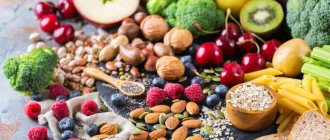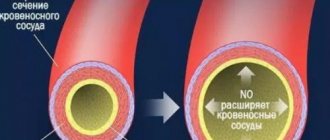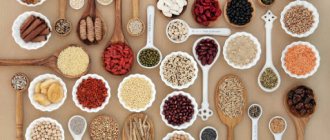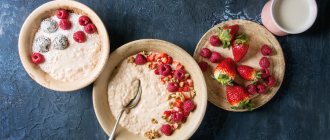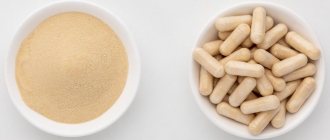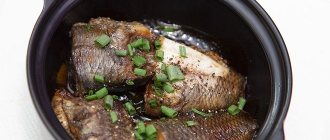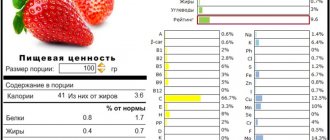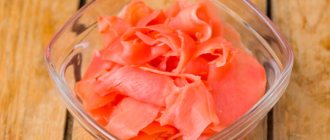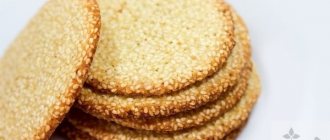Pectin - what is this substance?
Pectins are high-molecular heteropolysaccharides that are found in the membranes and intercellular spaces of plants.
These substances are structural components and help connect the walls of neighboring cells, allowing living tissues to maintain rigidity. Pectins are widely used in the production of confectionery products due to their ability to form thick gel-like solutions (hydrogels). Polymers are also used in finishing fabrics, making cosmetics, developing pharmaceuticals and medical biomaterials.
History of discovery
The first description of water-soluble substances with a strong gelatinizing effect was made in 1790 by the French chemist L. Vauquelin.
The researcher demonstrated how squeezed tamarind juice spontaneously forms a clear jelly that can be easily separated from the main mixture. The pectin compound was isolated in 1825 by the French pharmacist A. Braconneau. The scientist was able to describe the mechanism of its work: the substance gives plant fruits the ability to form a gelatinous mass when boiled with sugar. In doing so, Braconneau used a small amount of acid to destroy the salts synthesized by the chemical reaction. The scientist named the resulting substance pectin, which translated from Greek means “to harden.”
General characteristics
A characteristic property of plant polysaccharides is their ability to form hydrogels, due to which they are widely used in the food industry. Dilute polymer solutions exhibit the properties of Newtonian liquids, which is of great importance in the production of beverages. More concentrated formulations exhibit undesirable pseudoplastic behavior in which flow increases even with minimal force.
Pectin has found wide application in the food industry.
The chemical composition and tendency to gel make it possible to use this natural biopolymer in the pharmaceutical industry and medical practice. It is used in the design of drugs as a carrier of bioactive agents. However, it itself is capable of influencing metabolic processes, which is why it is considered as a tool for improving health.
Chemical composition
In modern science, pectins are a limited group of polymers whose structure is dominated by viscous rubber-like polyuronic acids. In higher plants, these substances consist of D-galacturonic acid residues that form long, unbranched chains.
Participation in metabolism
Since pectin is a water-soluble substance, it does not participate in the process of enzymatic digestion in the human small intestine, but is easily destroyed by the microflora of the large intestine.
While in the gastrointestinal tract, the polymer captures water and forms a gel-like structure that can bind and remove metal ions and bile acids. The gelling ability of pectin is considered as a potential mechanism of therapeutic effects on the body: the substance regulates the speed of movement of nutritional components and the degree of absorption of lipids.
Clinical studies have found that daily consumption of soluble fiber is accompanied by a decrease in serum cholesterol by 2-7%.
Contraindications and harm of the substance
With proper use of pectin-containing products and dietary supplements, no side effects are observed. Excessive consumption causes:
- gas formation, bloating;
- stool disorder;
- allergic reactions.
Pectin supplements must be taken separately from vitamins and medications, otherwise their absorption will be impaired.
Pectin-containing products are not contraindicated for pregnant and lactating women. They help pregnant women to have regular bowel movements and relieve constipation. The optimal amount per day is 10 grams.
Varieties of pectin
There is no unified classification of pectins, however, in world practice it is customary to consider 3 types of plant polymers: yellow (citrus), thermoreversible and FX58.
Yellow
It is made mainly from apple pomace or dried citrus peels, less often sugar beet pomace is used. It has a low degree of esterification and is recognized as one of the most effective types of water-soluble fibers that can be included in the diet. This biopolymer is used for the production of confitures and jams.
Yellow pectin is made from citrus fruits and apples.
Thermal reversible
This natural citrus pectin has an esterification degree of 50-80%. Its ability to gel is determined by its low pH and high concentration of sucrose. It is thermally reversible, i.e. dissolves in hot water. This polysaccharide is used when working with highly acidic components.
FX58
The gelling agent FX58 is able to interact with calcium-containing products, incl. milk and cream. It is suitable for making milk jelly, mousses and sauces.
Other classifications
Based on the form of the substance, there are 2 types of pectins:
- powder, which must be added to the composition along with sugar at a temperature of 50°C;
- liquid extract, which is pre-diluted in hot water.
Biopolymers are also distinguished by the rate of gelation (setting). Moreover, each type has an individual degree of esterification and operates in different temperature conditions.
| Type of cage | Esterification, % | Temperature, °C | Gelation time, minutes |
| High | 70-76 | 75-85 | 10-15 |
| Average | 70-72 | 50 | 15-20 |
| Low | 56-68 | 45-60 | 20-25 |
Features of pectin
The exact chemical composition and structure of pectin have not yet been established due to the high complexity of this molecule. However, many properties of the biopolymer have been well studied in practice.
Interaction with other tools
Pectin substances are capable of forming complexes with other natural compounds, which is why they are used in the creation of many food products.
In industry, biopolymers undergo esterification - a reaction of substitution of carboxyls with methoxy groups of alcohols and acids, as a result of which the gel-forming ability of polysaccharides changes. Depending on the degree of methoxylation (DE), the following types of substances are distinguished:
- Highly esterified pectins (DE>50%) - gel only at high acidity, high concentration of sugars and low pH. With increasing degree of esterification, the stability of hydrogels is directly proportional to the pH and the level of saturation of the solution with dry components.
- Low-esterified pectins (DE<50%) are capable of gelation, regardless of acidity and amount of sugar, but require the presence of calcium ions.
A separate group of compounds consists of amidated biopolymers formed as a result of treatment with ammonia.
They are characterized by a low degree of esterification and low sensitivity to changes in calcium concentration.
Signs of excess
Pectin does not tend to accumulate in the body, however, consuming large amounts of the substance may be accompanied by stomach cramps, increased gas formation in the intestines and loose stools. Undesirable consequences are short-lived.
Consumption of pectin may cause stomach cramps.
Symptoms of deficiency
Insufficient consumption of high molecular weight polysaccharides is associated with the following symptoms:
- overweight;
- increased concentration of cholesterol in the blood;
- general intoxication of the body;
- frequent constipation;
- loss of skin elasticity;
- decreased sexual desire.
General information
Pectin is found in the cellular tissues of plants and keeps them elastic, dense, helps ripened fruits and berries remain firm for some time and keep their shape during storage. When the fruit becomes overripe, the pectin in it breaks down into simple sugars, which are completely water-soluble. As a result, overripe fruits become soft and begin to deform.
Hard fruits contain the most pectin. Fruits and berries high in pectin can be made into jam or jelly without sugar or strong boiling.
But not all fruits have enough of this natural substance to make jam, jam or jelly - some will require either longer cooking time or additional pectin.
Table of pectin and acid content in fruits and berries
The pectin structure binds effectively to water in an acidic environment. Sugar increases the gelling ability of pectin and also affects the texture and consistency of jellies and jams as they cool and set. That is, to activate thickening you will need a high sugar content and some acids, such as citric acid.
Acid is a thickening catalyst and significantly shortens the reaction time. Pectin works without it, it will just take much longer to harden.
The level of pectin and acid in fruits and berries commonly used for making jam can be divided into three groups:
- Group I: If the fruit is not overripe, it has enough natural pectin and acid to form a gel-like texture when only sugar is added.
- Group II: Low levels of natural acid or pectin, supplementation may be required.
- Group III: Addition of acid or pectin or both is always required.
The concentration of pectin varies depending on the type of fruit and ripeness.
List of foods with different levels of pectin
| Group I | Group II | Group III |
| Lots of pectin | Low pectin levels | Very little or almost no pectin |
| Apples | Overripe apples | Apricots |
| Blackberry | Overripe blackberries | Blueberry |
| Citrus peel* see note | Cherry | Overripe cherry |
| Wild apples | Bird cherry | Figs |
| Cranberry | Elder | Blueberry |
| Currant | Raspberries** see note below | Peaches |
| Gooseberry | Nectarines | |
| Grape | Pears | |
| Quince | Grenades | |
| Plums | Strawberry |
**Raspberries are always identified by researchers as being low in pectin, but many home cooks have found that they often act as if they have high levels of this substance.
Gelatin and pectin - what's the difference? Comparison
Gelatin and pectin both create clear gels, but they are completely different products.
The main difference is that pectin is a water-soluble fiber obtained from red seaweed, and gelatin is a protein obtained from animal skins, bones, tendons, and cartilage.
- Pectin is used almost exclusively in high sugar foods such as jams.
- Gelatin is used in a much wider variety of products, including mousses, marshmallows and frostings, because it sets in a cool environment and does not require the inclusion of specific ingredients to activate it.
Pectin content table
Pectin is present in the largest quantities in fruits, but high concentrations of this compound are also found in vegetables, berries and some green plants. You can clarify the polymer content in products using special tables.
Fruits
| Fetus | Average amount of substance, % |
| Peach | 6,9 |
| Apricot | 6,3 |
| Apple | 5,9 |
| Plum | 4,5 |
| Pear | 3,9 |
| Lemon | 0,9 |
| Orange | 0,8 |
| Mandarin | 0,7 |
Vegetables
| Fetus | Average amount of substance, % |
| Radish | 11,1 |
| cucumbers | 7,7 |
| Bell pepper | 7,4 |
| Carrot | 7,0 |
| Sugar beet | 6,5 |
| Pumpkin | 6,2 |
| Eggplant | 5,9 |
| Peas | 3,8 |
| Tomatoes | 3,1 |
| White cabbage | 0,8 |
| Bulb onions | 0,6 |
Berries
| Fetus | Average amount of substance, % |
| Red Ribes | 9,1 |
| Black currant | 8,9 |
| Watermelon | 5,8 |
| Strawberries | 5,6 |
| Cherry | 5,4 |
| Raspberries | 4,9 |
| Cherries | 2,8 |
| Grape | 1,1 |
| Cranberry | 0,9 |
| Gooseberry | 0,8 |
Other products
Water-soluble dietary fiber is present in small quantities in green parts of plants, herbs and some seaweeds. The average content of polysaccharides in these products ranges from 1-2%.
How to determine the concentration of pectin yourself
An accessible way to determine the concentration of pectin is the alcohol test, but it can only be done for squeezed fruit juice.
You need 1 tsp. cooled extract mixed with 3 tsp. denatured ethyl alcohol 70% strength. The mixture should be placed in a glass container and shaken. If the juice has a normal concentration of pectin, then the reaction results in the formation of a stable gel-like lump. In a liquid with a low polysaccharide content, small clots will appear.
The concentration of pectin can be determined using ethyl alcohol.
Properties of pectin
High molecular weight polysaccharides are considered safe food components. However, in some cases they may exhibit undesirable properties.
Useful
Natural polymers have many useful properties that are widely used in the food industry and biomedical practice. Researchers have linked their consumption to the following positive effects:
- expansion of the population of beneficial bacteria in the large intestine, which leads to strengthening of protective barriers and improved functioning of the digestive organs;
- decrease in blood glucose concentration;
- removing excess cholesterol;
- binding and removal of heavy metal ions from the body;
- reducing the risk of developing cancer.
In medicine, pectin compounds are used as a vehicle for delivering medicinal components to various tissues of the human body.
On their basis, carriers of genes and molecular structures, regenerating compositions and dressing materials are created.
Harmful
Taking pectin substances may be accompanied by undesirable consequences:
- weakening the body's ability to absorb beta-carotene and certain medications, incl. cholesterol-lowering drugs and tetracycline antibiotics;
- stomach cramps and increased gas formation;
- allergic reactions.
Taking pectin substances can lead to allergic reactions.
Polysaccharides of higher plants can interfere with the implementation of oncology treatment strategies, therefore, in the presence of pathology, strict control of pectin consumption is necessary.
What is it for and where is it used?
Pectin is able to absorb water and swell. Therefore, in the food industry it is added as a thickener and stabilizer to various products:
- marshmallows, marshmallows, marmalade;
- sweets and chocolate with whipped filling;
- airy creams for cakes;
- jam, jam, confiture;
- fruit fillings in desserts, yoghurts and ice cream;
- sauces.
The substance not only gives the product a thicker consistency, it prevents separation during transportation and storage. Due to its presence in fruit juices, the pulp does not settle; even a small amount of polysaccharide makes the taste of the drink rich. At the same time, the stabilizer does not have its own taste and aroma.
What else do you need to know
Dietary fiber is not broken down into nutritional components, but sufficient consumption ensures metabolic processes. Therefore, it is important to understand under what conditions and in what quantities these substances should be included in the diet.
Daily requirement of the body
Experts don't set guidelines for how much pectin you should consume, but many manufacturers recommend eating 1,000 to 1,400 mg of fiber daily. To improve digestion and lose weight, you can increase your intake to 2500 mg.
What influences the need
The need for gelling agents increases with intoxication and infectious diseases. It is advisable to increase the volume of biopolymers in food if you are overweight, have poor digestion, or have high levels of sugar and cholesterol in the blood.
The need for pectin increases with excess weight.
Pectin digestibility
Dietary fiber is not digested in the small intestine, but when it enters the large intestine it is fermented by commensal bacteria. As a result of biochemical reactions, short-chain fatty acids are formed, which serve as an energy substrate for the body and a regulator of important metabolic processes.
Getting rid of extra centimeters with the help of peptides
Apple pectin promotes weight loss. With its help, you can even get rid of fat that has been deposited for years. But to obtain this effect, at least 25 g of the substance per day is required. In advanced cases, it is recommended to buy the appropriate drug. Overweight people who added a sufficient amount of pectin to their menu lost 300 g or more of fat mass per day.
It’s no wonder that many diets include large amounts of plant foods. Minimum calories and maximum benefits. Once in the body, peptides promote a feeling of fullness. Plus they cleanse the body well. The processes of using up old fat reserves are launched.
By the way, for better absorption of polysaccharides, you need to drink plenty of water. At least two liters during the day. Then the process of losing weight will be even more active. In addition to a slim figure, you will feel great and feel light.
Dilution of pectin
The method of use depends on the form of the pectin substance:
- The liquid extract is dissolved in boiling water and blended with a blender until smooth. The finished composition is poured in a thin stream into the hot fruit puree with continuous stirring.
- The powder is mixed with sugar and added to berry puree heated to 50°C.
Pectin is added to heated berry puree.
How to make pectin at home
You can make apple thickener at home.
It is necessary to choose green, firm and tart fruits that have a high concentration of pectin compounds. Ingredients for cooking:
- large apples - 7 pcs.;
- water - 800 ml;
- lemon juice - 2 tbsp.
The apples are washed and cut into 4 parts along with the peel and core. Place the fruits in a saucepan, add water and lemon juice. Bring the mixture to a boil and cook for 40 minutes, stirring lightly. Then the composition is placed in cheesecloth and hung for several hours to strain. The resulting extract is brought to a boil again and boiled for about 20 minutes until its volume is reduced by half. The finished mixture is cooled and used within 4 days.
Use in cooking
A gelling agent of plant origin is widely used in the preparation of sweet dishes and winter preparations. The substance allows:
- reduce the cooking time for jam or marmalade;
- preserve all useful connections;
- give any consistency;
- reduce the amount of sugar.
When adding a stabilizer to a hot dish, it does not thicken immediately, but after complete cooling. Therefore, the marshmallows are formed while the mass is still hot.
How to replace pectin in a recipe
Instead of pectin, you can use starch, gelatin, and agar-agar as a thickener in recipes. They are interchangeable in some dishes, but not in most.
Using starch, you can make sauce or cream thicker, but you cannot cook jam.
Gelatin is a thickener of animal origin, protein in nature. At room temperature it will not be thick, so jam with gelatin will not work, and marmalade from it will melt quickly. It is suitable for jellied meat, cream-based creams, and curd desserts.
Agar-agar is useful for making soufflés, marshmallows or Bird's milk. It is capable of creating a very dense consistency, so it is preferable for making marmalade.
How to use pectin for jam
This natural polymer helps prepare thick jam in the shortest possible time. This helps reduce the heat treatment time, which allows you to preserve vitamins and beneficial properties to the maximum.
The thickener is added to hot berry puree, after mixing it with a small portion of sugar. This is necessary so that the stabilizer is evenly distributed throughout the entire fruit mass and does not stick together into one lump. You can use ready-made store-bought mixtures of dietary fiber, sugar and citric acid - gelling sugar.
For every kilogram of raw materials, add from 5 to 15 g of pectin. The more sugar the recipe calls for, the less thickener you need. The recommended dosage is always written on the bags.
By adding an apple or citrus stabilizer, you can make jam without sugar at all, which is important for diabetics. In this case, for 1 kg of fruit you will need to take 15 g of dry powder.
Marshmallow on pectin
Whipped sweetness can be prepared using pectin, gelatin or agar-agar. The basis of the marshmallow is baked apples, and by whipping sugar with egg whites, the product acquires an airy consistency. The addition of a thickener (agar agar) preserves the tenderness and porosity of the product; it does not fall off over time.
Pectin marmalade
At home, you can make marmalade using a vegetable gelling compound. It will be real, without dyes or flavors, unlike store-bought products.
The preparation scheme is no different from jam, just more pectin is added: 10 g of powder per 300 g of fruit puree. Jam cooked with stabilizer should be poured into molds and cooled.
To make marmalade, I most often use apples, plums, and citrus fruits. Fans of original flavors can try cooking it from red or yellow tomatoes with spices.

